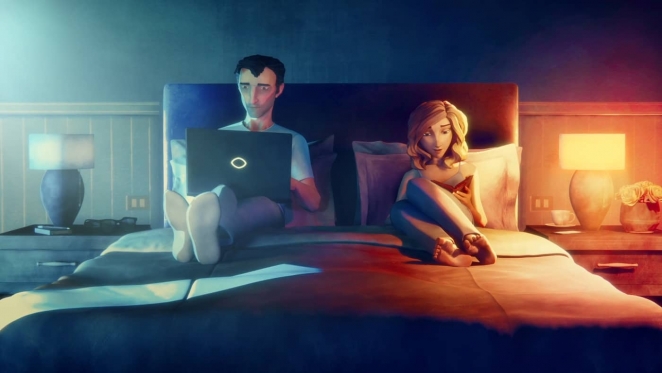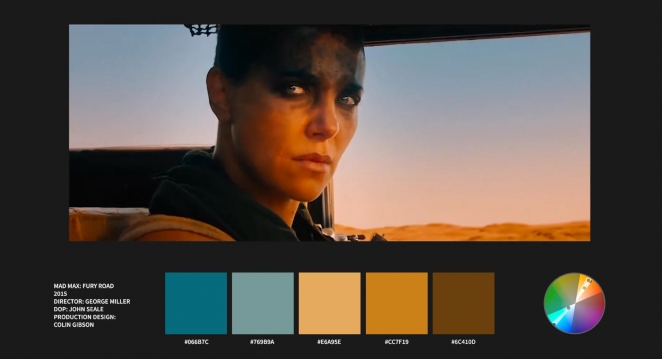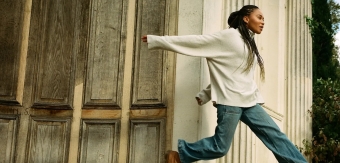Among the many innovations that the 2020 Covid crisis accelerated, remote filming is certainly the most interesting. If anything, because it was a proper life-saver for an entire sector.
Both the events and the production industry have been forced indoors over night, leading the two sectors to adopt the much-abused ‘adapt or die’ we’ve heard so much in the past 10 months. If the events have been able to move some of their portfolios online, some production companies have had no choice but to cease operations and rework their ways. Remote filming came to their aid.
Although the technology had been there for a while, it was simply not powerful nor resourceful enough to be used on a global scale. Things have obviously changed quite a lot in 2020, and now it’s been almost a year since remote filming truly kicked off, with some amazing films and ads produced entirely from remote – including the Abusers Always Work From Home campaign by Wunderman Thompson.
Fast forward nearly a year later and remote filming is still very much needed and alive in the industry, as we all slowly prepare to ease back into a new normal with the assist of the vaccines. But what will happen once the pandemic is declared over? Is remote filming here to stay, and how will it change the production industry?
Near the end of last year, and thanks to Anthony and Yanina Barry from Good Films, we have been in touch with a number of commercial and content producers, filmmakers and production clients to better understand the impact of remote filming in the sector. Good Films has been working on its own proprietary software for remote production, named Remote Filming, and they’ve had the chance to partner with a number of professionals in the industry over the past year.
Here’s what clients truly think of remote production in the creative industry.

Image credit: Tamryn Kerr
A smooth, seamless experience
You’d be surprised to learn how exceptionally smooth remote filming can be, according to the professionals we’ve spoken with. The most advanced remote filming software out there is able to guarantee little to no latencyand stream extremely high-quality files over the internet. Some, like Executive Producer at Pull The Trigger Max Brady, even go as far as to say that “for Ad agency and marketing clients, it is pretty similar to being on set, except that they don’t have the tea table to congregate around.”
When set up correctly, remote filming tools enable clients and agencies to connect as if they were in the same video village. Live video footage is streamed to the client for review, and the crew can get approval in real time even while substantially apart.
And of course, with fewer people to manage on set, communication becomes more effective too, and budget costs may decrease by a lot.
The only difference really is that we check in, get feedback and approvals from the client virtually on a Zoom call, rather than in a snacks-filled green room
According to commercial and content producer Jennifer Gelin, the shooting process in itself hasn’t changed too much. “The only difference really is that we check in, get feedback and approvals from the client virtually on a Zoom call, rather than in a snacks-filled green room. The client will review the footage exactly as it is on the monitor, while our playback operator can put on overlays/titles and similar as per usual.”
Even from remote, the team is able to hear rolls and cuts, review the takes, discuss, and hopefully approve to move on. Many producers and clients are treating remote filming just the same as a standard video village setup on set. And when the tools are just right, the feed can reach high quality peaks over the Internet alone, carrying high-fidelity data from the set to the clients themselves.
Remote filming is also a huge resource for smaller markets, such as Max Brady’s beloved Ireland. “Knowing that I can present my rostered directors to clients that are not based here, and knowing that I can service a job for directors in other countries, has meant that we have been able to pivot and keep working through the most challenging of times,” Max says.
Saving costs and time, but…
Of course it isn’t all perfect, and there are some drawbacks to using remote filming over traditional shoots. According to Jennifer Gelin, you do lose a bit of the human element when the entire team is not on set. Reading feedback and reading the room becomes harder, not to mention that each movement of the crew has to be carefully planned prior to the shoot.
“Part of our job is to ‘feel the room’ and understand from a conversation with the client what they’d like to try differently in the next shot, if they’re happy or not, etc. The lack of interaction can sometimes make it hard to read what they want exactly. And if I feel we want to push back on something, it doesn’t feel as and easy to do so via a computer screen,” Jennifer adds.
At the same time, Max Brady agrees that budget is liable to rise due to the increased security measures and regulations that each crew is required to put in place. These cost money, and “there are many advertising and creative clients we have who do not understand that during a pandemic of a highly infectious, airborne disease, we need to put systems and protocols in place to protect people.”
There is no question that you are actually saving money in the long run, especially when the pandemic will be over
Additionally, according to Jennifer, a remote filming setup isn’t cheap and they always require the use of some kind of software, which the average client isn’t always inclined to get on board with.
But if you do risk spending some of the budget on one end, there is no question that you are actually saving a lot more in the long run. With remote filming, only the most necessary and fundamental roles on set are required to join the shooting, while the rest of the crew can follow directly from home. This saves money, especially when the client is expected to go on an international travel to attend the shoot; and it has a positive impact on the environment as well.
Commercials and Content Producer Yoshiteru Haruta says: “If client and agency are on set, we have to provide food and PAs for them. But if we use a remote filming system, we don’t need to. Which means our budget isn’t affected as much.”

Image credit: Contra
Remote Filming VS Traditional Shoots - Which one is better?
Of all the clients and producers we’ve interviewed, most agree that remote filming is here to stay, although it is hard to prefer it over traditional shoots. For the reasons mentioned above, Jennifer Gelin prefers to have the client on set, and Freelance Commercial Producer Daniel Gartner strongly agrees with that sentiment. However, having been introduced to remote filming in the past year, all somewhat agree that they would resort to it again if needed, and they would be quite comfortable using it that odd time or two.
Max Brady, on the other hand, is particularly happy to work with either, though remote filming can feel a bit like “being a plate spinner. You have so many information threads to keep spinning. Directors, floor, agency, client. You need to be super calm and super focused.”
But perhaps because of that, Twenty First City Film Producer Masa Kokubo prefers remote filming, on some aspects. “The actual communication with the director became more focused, the crew needs to remain quiet whilst we engage in conversations, whereas people can usually produce noise while chasing set-ups. Also, not having directors physically on set means I am relieved from having to plan living costs and hotel needs.” Even Masa, however, believes that the physical presence of directors will be needed for more choreographed and complex shoots.
Most clients will definitely consider using remote filming after the pandemic
And while most of the interviewees had never resorted to remote filming pre-Covid, as the technology was not in par with the times, everyone will definitely consider using it post pandemic, knowing that shoots may become more efficient and focused, and that most client jobs can now be done from the comfort of one’s home.
Not to mention the fact that, with most clients and agencies being busy with multiple projects and schedules, remote filming could help them juggle all those projects more efficiently and smoothly. “Anyone who has spent any time around the client monitor on a commercial shoot knows how busy our clients are. I’d imagine it would be preferable to be able to oversee a shoot from the comforts of one’s own office to anything we can provide on location.”

Image credit: Casmic Lab
Is remote filming the future of the production industry?
While remote filming can be extremely useful to optimise shoots and make them more efficient, most clients are sceptical that it will become the absolute standard of the industry – and personally, I don’t believe that either. Much like with what is happening with the office workforce, the future is more likely to be based on a hybrid model, with some elements to be carried out on-site and others entirely from remote.
There are many reasons for this. But I think Jennifer Gelin summarised them well: “Although remote filming is hugely beneficial, our work & interactions on set and in production are what makes this industry so special. And I really value having client in the room on set. But I think it's showing clients that production can proceed and overcome anything.”
I don't think remote filming is the future. I think it's the present.
But though remote filming will never replace traditional shoots entirely, the opposite is quite true as well. “I don’t think remote filming is the future. I think it’s the present,” Daniel Gartner says. “The tech is there, the solutions are available. Personally, I can’t wait to see what the future holds for improving upon an already rock-solid system. Do we eventually feed full colour images back to a DIT suite for live colour, as opposed to rolling a cart off a truck? Can we work with VFX for live composition or render in full-working frames, with the power of their in-house systems? Film shoots can be a lot like a circus, and the fewer personnel required to be present on set makes the support and logistics that much easier.”
If anything, remote filming has shown that not even a global pandemic can shatter the production industry. Even in the wake of a highly transmissible disease like COVID-19, filmmakers and directors across the world were able to come up with solutions to remain in business, after an initial time that seemed to mark the entire industry as completely lost. Tech will improve, the solutions will become more sophisticated, and remote filming will become yet another powerful tool to testify the strength of the creative industry for posterity.
“How remote filming has developed and evolved, and how production companies have adapted to it so quickly with such relish and agility, is a testament to our resilience and our tenacity as an industry,” Max Brady concludes.






